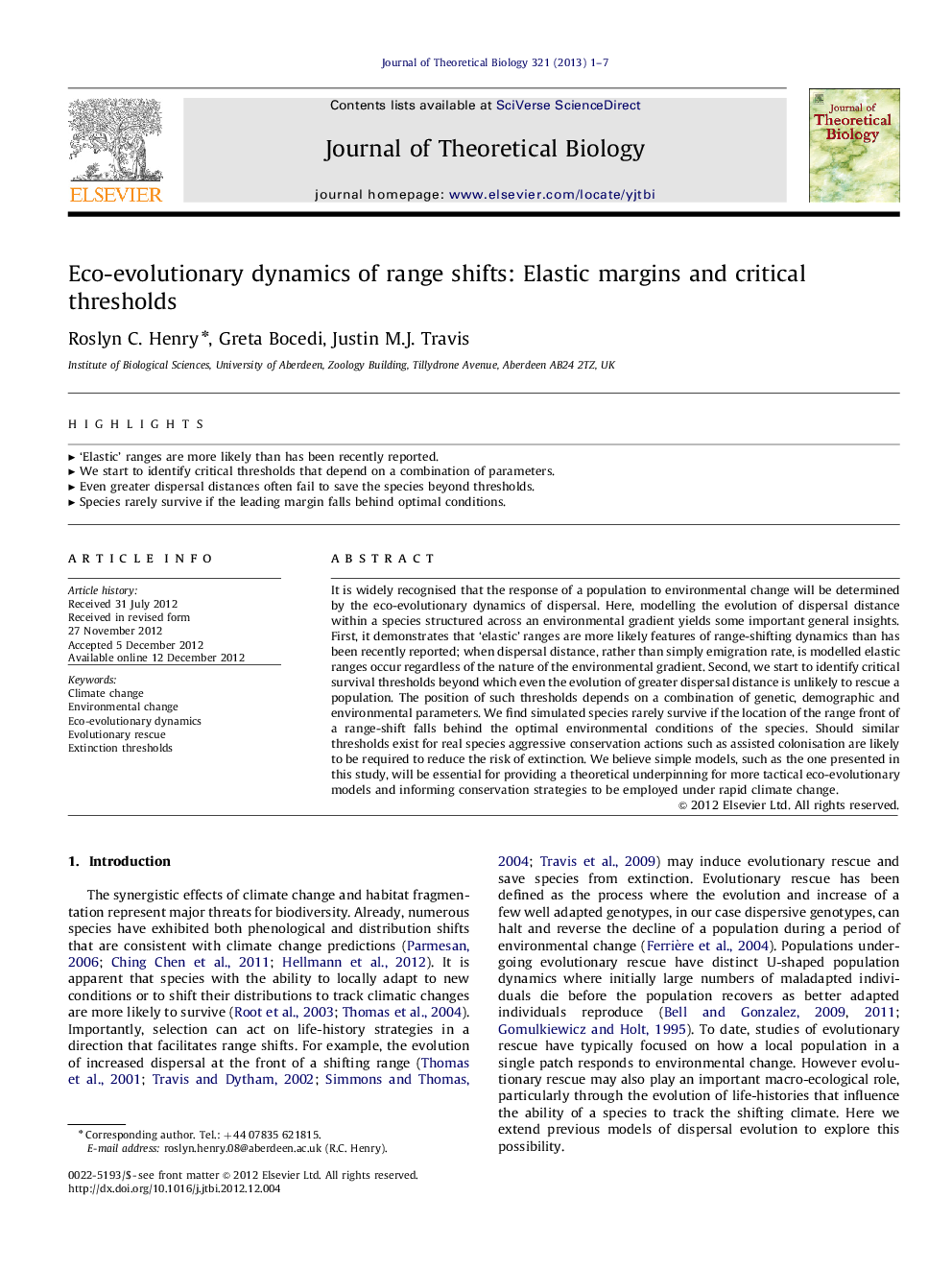| Article ID | Journal | Published Year | Pages | File Type |
|---|---|---|---|---|
| 4496482 | Journal of Theoretical Biology | 2013 | 7 Pages |
It is widely recognised that the response of a population to environmental change will be determined by the eco-evolutionary dynamics of dispersal. Here, modelling the evolution of dispersal distance within a species structured across an environmental gradient yields some important general insights. First, it demonstrates that ‘elastic’ ranges are more likely features of range-shifting dynamics than has been recently reported; when dispersal distance, rather than simply emigration rate, is modelled elastic ranges occur regardless of the nature of the environmental gradient. Second, we start to identify critical survival thresholds beyond which even the evolution of greater dispersal distance is unlikely to rescue a population. The position of such thresholds depends on a combination of genetic, demographic and environmental parameters. We find simulated species rarely survive if the location of the range front of a range-shift falls behind the optimal environmental conditions of the species. Should similar thresholds exist for real species aggressive conservation actions such as assisted colonisation are likely to be required to reduce the risk of extinction. We believe simple models, such as the one presented in this study, will be essential for providing a theoretical underpinning for more tactical eco-evolutionary models and informing conservation strategies to be employed under rapid climate change.
► ‘Elastic’ ranges are more likely than has been recently reported. ► We start to identify critical thresholds that depend on a combination of parameters. ► Even greater dispersal distances often fail to save the species beyond thresholds. ► Species rarely survive if the leading margin falls behind optimal conditions.
